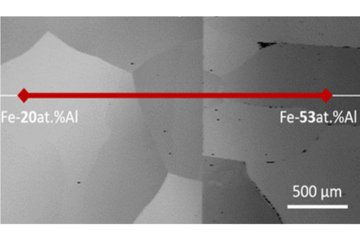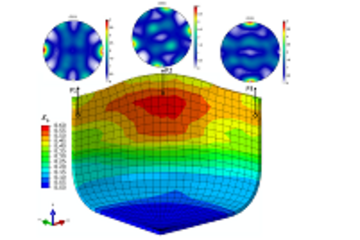All genres
201.
Talk
Additive Layer Manufacturing of Fe–Al and Fe–Al–Ti–B. Advances in Materials & Processing Technologies – AMPT 2015, Madrid, Spain (2015)
202.
Talk
Microstructures of iron aluminides processed by additive layer manufacturing and spark plasma sintering. Aluminium a nezelezne kovy 2015 / Aluminium and non-ferrous Metals 2015, Bystrice nad Pernstejnem, Czech Republic (2015)
203.
Talk
Prozessieren innovativer intermetallischer Fe–Al Legierungen mit additiven Fertigungsverfahren. BMBF-Technologiegespräch „Materialinnovationen für die industrielle additive Fertigung“, Bonn, Germany (2015)
204.
Talk
Diffusion couples as a "new" method for material synthesis. 61. Metallkunde-Kolloquium - Werkstoffforschung für Wirtschaft und Gesellschaft, Lech am Arlberg, Austria (2015)
205.
Talk
Quantitative Chemical-Structure Evaluation using Atom Probe Tomography - Short-Range Order Analysis of Fe–Al. International Conference on Solid-Solid Phase Transformations in Inorganic Materials (PTM 2015), Whistler, BC, Canada (2015)
206.
Talk
Influence of B on Structure and Mechanical Properties of Fe–Al–Nb Intermetallic Alloys. Intermetallics 2015 , Kloster Banz, Germany (2015)
207.
Talk
Fe–Al Alloys with Fine-Scaled, Lamellar Microstructure: A New Candidate for Replacing Steels in High-Temperature Structural Applications? 60th Anniversary Metal Research Colloquium organized by the Department for Metal Research and Materials Testing of the University Leoben, Lech am Arlberg, Austria (2014)
208.
Talk
Alloy development and industrial processing of iron aluminide based alloys. Czech-Japanese Workshop on High-Temperature Intermetallics, Brno, Czech Republic (2014)
209.
Talk
Alloy development and industrial processing of iron aluminide based alloys. IMDEA 2014 - Seminar Series, Getafe, Spain (2014)
210.
Talk
Additive Manufacturing of a Binary Iron Aluminide by Laser Metal Deposition and Selective Laser Melting. Intermetallics 2013, Educational Center Kloster Banz, Bad Staffelstein, Germany (2013)
211.
Talk
Current perspectives of iron aluminide based alloys. EUROMAT 2013, Sevilla, Spain (2013)
212.
Talk
The Effect of Li on Intermetallic Fe−Al Alloys. MRS Fall Meeting 2012, Boston, MA, USA (2012)
213.
Talk
Mechanical properties of transition-metal laves phases. Plasticity 2012, Symp. on Plasticity and Its Current Applications, San Juan, Puerto Rico (2012)
214.
Talk
Evaluation of sensivity to hydrogen embrittlement in Fe3Al–xCr alloys with different chromium concentration. FeAl2011, Discussion Meeting on the Development of Innovative Iron Aluminium Alloys, Lanzarote, Canary Islands, Spain (2011)
215.
Talk
Theoretical study of the environmental effect of H-containing gases on Fe–Al surfaces. FeAl2011, Discussion Meeting on the Development of Innovative Iron Aluminium Alloys, Lanzarote, Canary Islands, Spain (2011)
216.
Talk
Neutral salt spray tests on Fe−Al and Fe−Al−X. FeAl2011, Discussion Meeting on the Development of Innovative Iron Aluminium Alloys, Lanzarote, Canary Islands, Spain (2011)
217.
Talk
Transformation Kinetics in Al-rich Ti–Al. 4th International Workshop on Titanium Aluminides, Nürnberg, Germany (2011)
218.
Talk
Phases, Phase Transformations and Evolution of Microstructures in Al-rich TiAl. ISPMA 12, 12th International Symposium on Physics of Materials, Prague, Czech Republic (2011)
219.
Talk
Thermodynamic Assessment of the Fe–Nb and Fe–Al–Nb System. 3rd Sino-German Symposium on Computational Thermodynamics and Kinetics and Their Applications to Solidification and Solid-State Phase Transformation, Xi’an, China (2011)
220.
Talk
Experimental Investigations of Phases, Phase Equilibria, and Melting Behaviour in the Systems Fe–Al–Nb and Co–Al–Nb and Their Terminal Binary Systems. Calphad XL, Rio de Janeiro, Brazil (2011)











